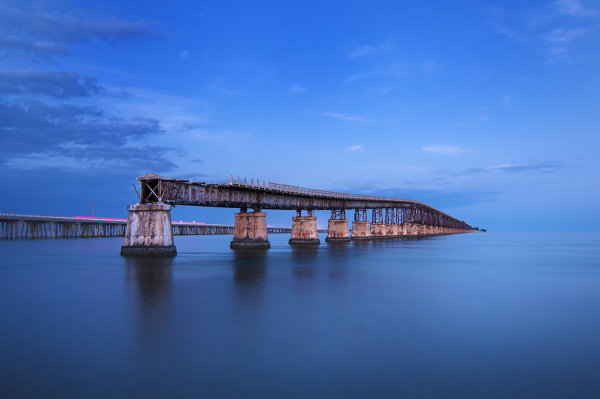Henry Morrison Flagler (1830–1913), was a principal in Rockefeller, Andrews & Flagler and later in Standard Oil. The wealthy man took interest in Florida while seeking a warmer climate for his ailing first wife in the late 1870s. He became a developer of resort hotels and railroads along the east coast of Florida. Beginning with St. Augustine, Flagler helped develop Ormond Beach, Daytona Beach, Palm Beach, and became known as the Father of Miami, Florida.
Flagler's rail network became known as the Florida East Coast Railway (FEC). After the US announced the construction of the Panama Canal, Flagler became interested in linking Key West to the mainland. Key West, the United States' closest deep-water port to the Canal, could take advantage of Cuban and Latin America trade and significant trade possibilities with the west.
Initially called "Flagler's Folly", the construction of the oversea railroad required many engineering innovations as well as vast amounts of labor and monetary resources. At one time during construction, four thousand men were employed. During the seven year construction, three hurricanes—one in 1906, 1909, and 1910—threatened to halt the project. .
Despite the hardships, the final link of the Florida East Coast Railway was completed in 1912 and Henry Flagler rode the first train into Key West aboard his private railcar, marking the completion of the railroad's oversea connection to Key West and the linkage by railway of the entire east coast of Florida. It was widely known as the "Eighth Wonder of the World."
In the end, though, hurricanes had their way, and during the Labor Day Hurricane of 1935 the bridge was irreparably damaged. It's a sight to see today.
location the florida keys
photographer patrick connolly
